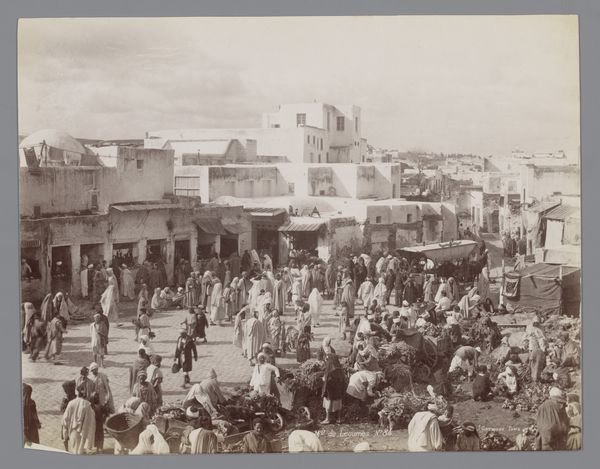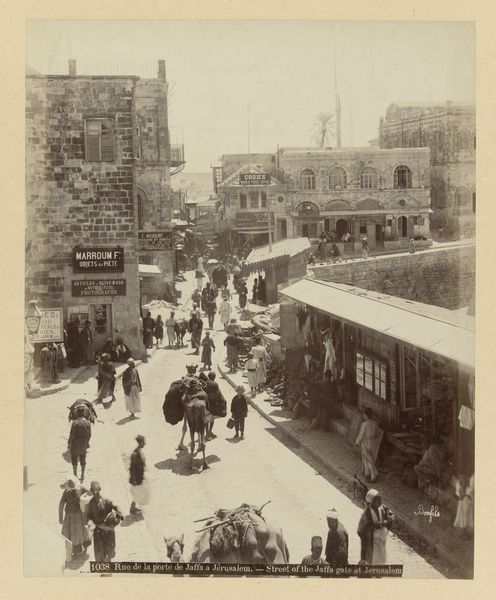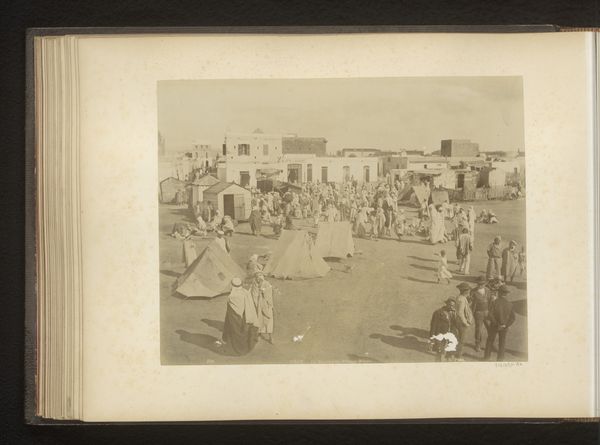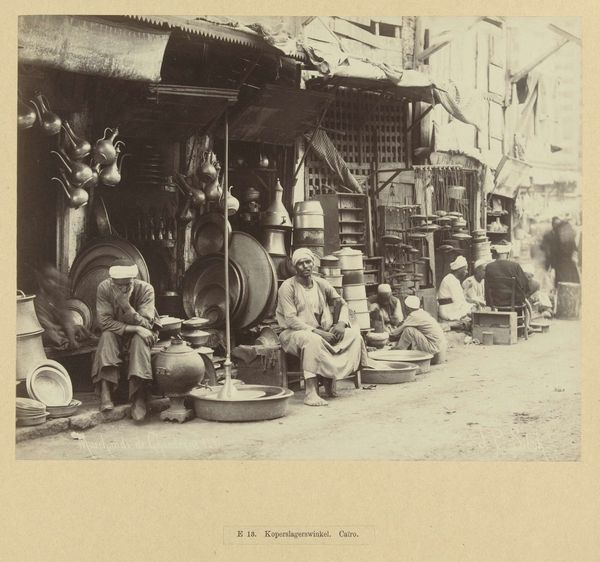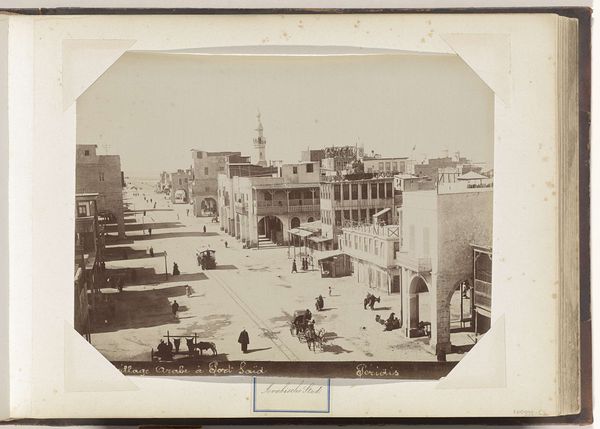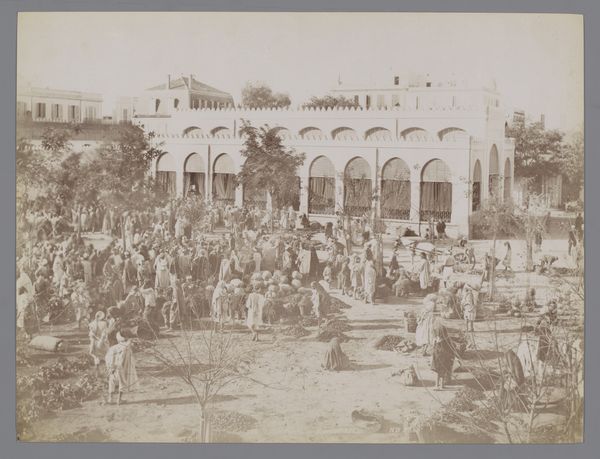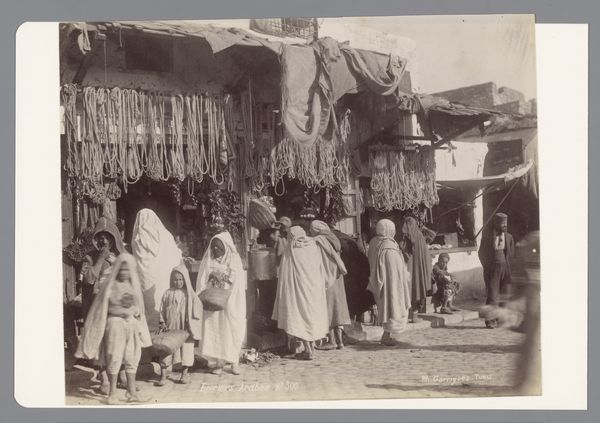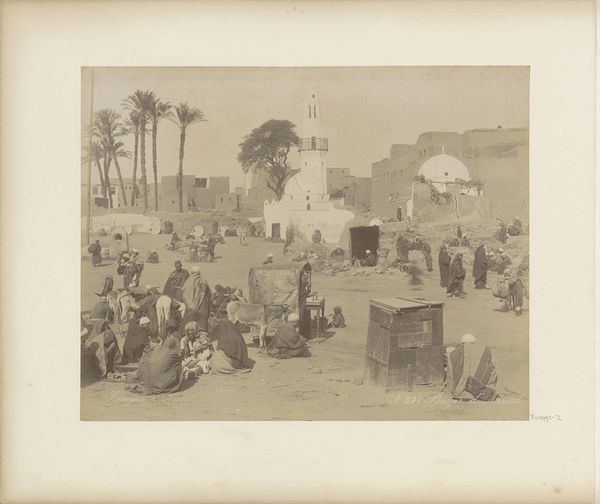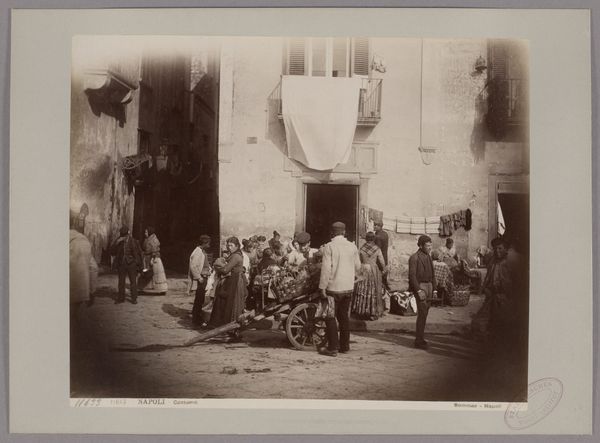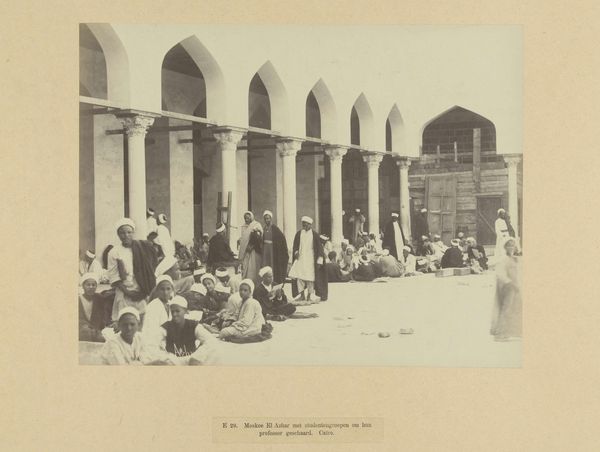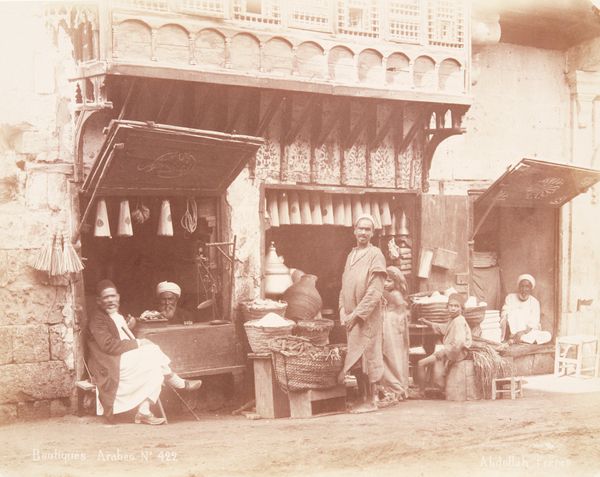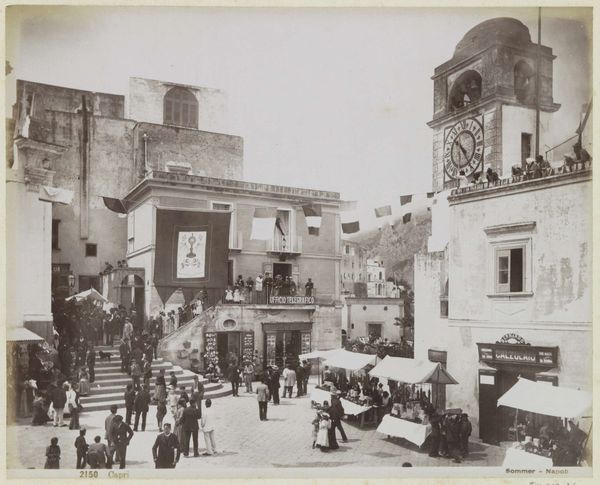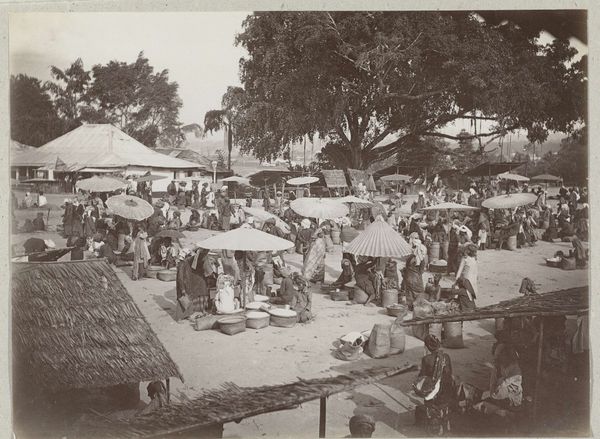
photography, albumen-print
#
landscape
#
photography
#
orientalism
#
19th century
#
genre-painting
#
albumen-print
Dimensions: height 220 mm, width 285 mm
Copyright: Rijks Museum: Open Domain
Curator: Looking at this photograph, taken by Maison Bonfils, we see “Markt met handelaren en bezoekers in Jaffa,” or “Market with Traders and Visitors in Jaffa.” It is an albumen print dating from around 1867 to 1895. What strikes you upon first viewing? Editor: The photograph vibrates with human activity, doesn't it? So many figures, a true record of community bustling within the architecture of trade and everyday commerce. Yet there's something slightly staged about the whole scene. Curator: That staging could reflect photographic practices of the time, but might it be pointing to an active tradition? Markets as sites of communal interaction have deep historical roots and have always been rife with complex signs and visual cues. The goods on display – arranged as ritualistically as in a still life - are like holy offerings to consumption. Editor: True, and consumption, in the context of 19th century Orientalism, needs a critical gaze. It's not just about recording a scene. Consider the power dynamics at play. A European photographic firm capturing what it exoticizes, packaging the Orient for Western eyes... Doesn't that colonial lens skew the 'reality' captured? Curator: A valid point. Still, photography, with its capacity to document minutiae, inadvertently becomes a kind of archive. I am drawn to the faces in the crowd, their individual narratives captured momentarily, even if filtered through a specific, external gaze. It presents cultural continuity alongside change. Consider the repetitive arcaded windows, and even parasols... Editor: And how this orientalist depiction would have affected the West’s perception of the Middle East then, shaping narratives, perpetuating stereotypes... Photographs don't simply mirror reality, they construct it. It makes me ponder the responsibility the artist held, or perhaps more likely did not. Curator: In looking closely, maybe we start to unpack those very constructions. Photography might have been wielded as a colonial tool, yes, but viewing them now grants an opportunity for interrogation. To address the shadow the photographer casts on the present. Editor: Indeed, scrutinizing it offers more than an image. It lets us uncover the entangled histories and skewed perspectives embedded within seemingly straightforward depictions of everyday life. The marketplace becomes a stage of representation.
Comments
No comments
Be the first to comment and join the conversation on the ultimate creative platform.
